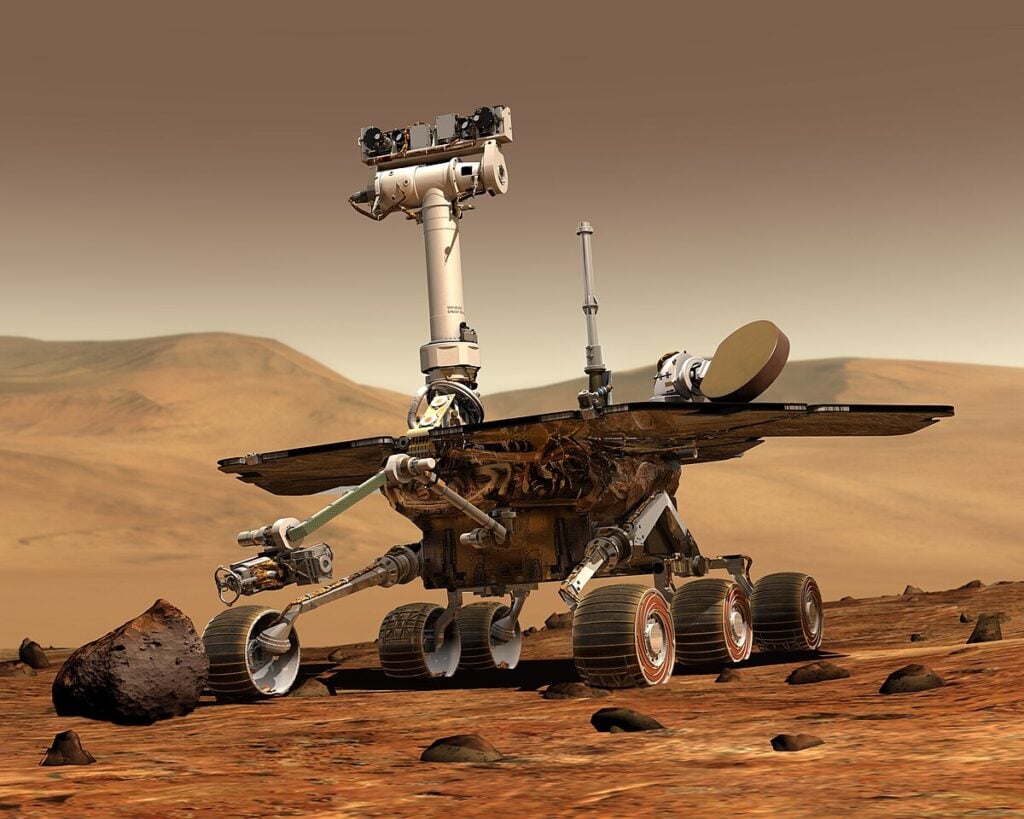Explore NASA’s key strategies and findings in the ongoing search for Martian life.

NASA’s search for life on Mars combines advanced technology, careful analysis, and international collaboration. Rovers equipped with scientific instruments explore the Red Planet’s surface, seeking signs from ancient water flows to organic molecules. While challenges like radiation complicate detection, the agency’s persistent efforts focus on distinguishing true biosignatures from geological phenomena, aiming to unlock critical insights about Mars’s past and its potential to harbor life.
1. Mars has conditions that once might have supported microbial life.

Mars, with its expansive rusty plains, once had conditions that could have supported life, particularly microbial forms. While present conditions are often harsh and inhospitable, the evidence suggests a vibrant past with the potential for sustaining life in some form.
Understanding the past conditions helps scientists hypothesize about microbial life that might once have thrived there. The presence of certain minerals suggests that water existed, potentially offering a nurturing environment for primitive life, as shared by NASA. This hypothesis drives many of NASA’s ongoing explorations and research efforts.
2. NASA uses rovers equipped with instruments to analyze the Martian soil.

NASA deploys sophisticated rovers to Mars, each equipped with a suite of scientific instruments designed to probe the planet’s surface. Perseverance, for example, analyzes soil composition, seeking signs of past biological activity hidden in Martian dust.
These rovers are like mobile laboratories, working tirelessly to sift through ancient Martian layers. Each discovery they make, from rock samples to unusual soil compositions, adds a piece to the puzzle of understanding Mars’s life-supporting capabilities. They’re our robotic explorers, tirelessly gathering invaluable data, as reported by BBC.
3. Evidence of ancient water flows hints at Mars’s potentially habitable past.

Ancient water flows on Mars, etched into the terrain as if drawn by a giant finger, offer glimpses into a more hospitable past. Channels carved by water hint at environments that may have supported life billions of years ago.
These flowing channels, preserved in the landscape, provide scientists clues about potential habitats. The presence of water in Mars’s history is crucial because water is a fundamental component of life as we know it. Such findings continue to fuel interest in Mars’s potential to harbor other life forms, as mentioned in USA Today.
4. Methane detections on Mars intrigue scientists studying biological origins.

Methane on Mars sparks scientific curiosity due to its potential biological origins. Periodic bursts of this gas, detected by various missions, suggest possible microbial activity beneath the surface—or geological processes that mimic life.
The existence of methane is a puzzle demanding further investigation. On Earth, much of this gas is produced by living organisms, prompting scientists to examine whether similar biological processes could occur on Mars. This mysterious presence continues to propel astrobiological research on the Red Planet.
5. NASA’s Perseverance rover collects samples for future return to Earth.

Perseverance rover’s mission involves collecting and caching samples of Martian rock for a future return to Earth. Each piece of Mars is painstakingly sealed to preserve its pristine condition for eventual analysis by our most capable terrestrial labs.
This collection effort is crucial for understanding Mars in detail. Scientists hope to identify biosignatures—direct indicators of past life—by examining these samples. The mission represents a giant leap in planetary science, a step towards unraveling Mars’s mysterious past.
6. Finding organic molecules on Mars could suggest building blocks of life.

Detecting organic molecules on Mars might reveal the building blocks of life. These compounds, although not life themselves, could indicate environments where life once emerged or point to ongoing chemical processes.
The discovery of organic compounds spurs excitement and further investigation. While organics don’t confirm life, they suggest areas where microbial life could potentially exist or have existed. Each find heightens anticipation in the scientific community, raising interesting questions about the origins of life.
7. Radiation on Mars’s surface challenges the survival of living organisms.

Mars’s surface is bombarded by intense radiation, posing significant challenges to life’s endurance. Unlike Earth, Mars lacks a robust magnetic field or an atmosphere thick enough to shield potential organisms from harmful cosmic and solar radiation.
This harsh environment complicates the search for life. Any microbial life forms would need to exist deep underground or have unique adaptations. Unraveling how life could survive on Mars under such conditions remains a critical pursuit in the quest to discover extraterrestrial existence.
8. Missions aim to distinguish between biological and non-biological signs.

Distinguishing between biological and non-biological signals on Mars is a fundamental goal of exploration missions. The clues in the soil could stem from past geological processes or potentially ancient Martian life.
To conclusively identify life, scientists must differentiate between these processes. Instruments onboard spacecraft meticulously analyze collected samples, aiming to confirm biological origins of detected signals. This challenge demands precise methodologies, furthering both technology and understanding.
9. NASA collaborates internationally to maximize the search for Martian life.

NASA aligns with international partners, utilizing a wealth of collective knowledge and resources to enhance their Martian explorations. Collaboration enriches the search for life, offering diverse perspectives and innovative solutions.
Strategic partnerships with agencies worldwide amplify research capabilities. By pooling assets and expertise, missions gain precision and breadth, increasing the chances of identifying Martian life or its signs. It’s a testament to the global drive to comprehend our planetary neighbor’s secrets.
10. The quest for life on Mars shapes future exploration technologies.

Mars’s exploration shapes the next generation of space technologies, designed to unlock the Red Planet’s secrets. Developments stemming from this quest influence tools and systems for missions beyond our solar neighborhood.
Continual innovation enhances exploration mechanisms. Techniques refined through Mars missions lay the groundwork for future endeavors. These technological advances provide a bridge to upcoming challenges, ensuring humanity is better equipped for uncharted cosmic frontiers.
